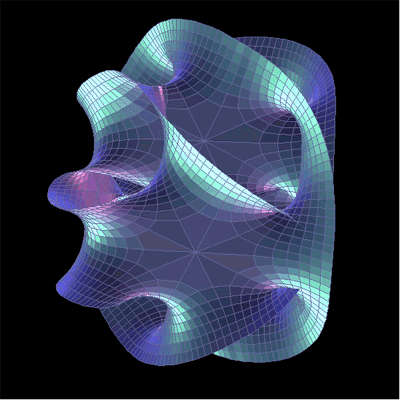The phenomenon of single-atom interference stands as a paragon of quantum mechanics, revealing the perplexing yet exquisite nature of particle behavior at a minuscule scale. At the nexus of particle physics and wave mechanics, this phenomenon sheds light on the foundational principles that govern the subatomic realm. It not only demystifies the persistence of classical intuition but also elucidates the conundrums presenting at quantum levels. This exploration unveils the profound intricacies behind single-atom interference while simultaneously reflecting on its wider implications within the field of quantum theory.
At first glance, interference is a hallmark of wave phenomena, observable with classical waves such as light and sound. However, the overarching implications of interference extend deeply into the heart of quantum mechanics. The double-slit experiment, a seminal demonstration of this concept, serves as a critical reference point, illustrating how even a single atom exhibits interference. When atoms are directed towards a barrier with two slits, one might predict that they would travel through one slit or the other, behaving as classical particles would. Yet, the empirical findings reveal an entirely different reality—the atoms create an interference pattern, characteristic of waves, even when transmitted one at a time.
This wave-particle duality underscores a fundamental aspect of quantum mechanics: the superposition principle. Quantum entities do not adhere to a singular state; rather, they inhabit multiple potential states simultaneously until observed. This prospect evokes radical shifts in understanding. In the single-atom scenario, it indicates that each atom traverses both slits concurrently, producing interference as a wave would before being detected at a specific position upon measurement. This intrinsic quirk of nature challenges the classical worldview and bewitches the imagination, revealing layers of reality not immediately accessible to empirical scrutiny.
Moreover, this interplay of wavelike and particle-like behavior draws attention to wavefunction collapse—a process where a quantum system transitions from a superposition of states to one definitive state upon observation. By scrutinizing the statistical distributions of countless single atoms registered after interaction with the slits, one grasps the essence of quantum behavior. The aftermath of such interactions starkly contrasts with classical expectations and invites inquiry into the mechanics of observation itself—whether the act of measurement alters the state of the observed system inherently or is merely a reflection of an underlying reality.
The implications of single-atom interference extend beyond mere academic curiosity; they compel a reassessment of the deterministic frameworks that have long governed physics. The interplay of uncertainty and probability permeates quantum mechanics. Yet, it is crucial to confront a paradox. Despite its underlying randomness, the behavior observed through massive statistics of single-atom interference manifests predictably laid out through probabilistic distributions. This duality—an occurrence of randomness yet revealing orderly patterns—stands as a testament to the complexity of the quantum landscape.
Equally fascinating is the technological potential stemming from a deeper understanding of single-atom interference. Quantum computing and quantum cryptography exemplify pioneering domains seeking advancements derived from principles that become tangible through these minute interactions. In the development of qubits—quantum bits that harness the duality of being both one and zero simultaneously—single-atom interference principle serves as the foundational bedrock. Thus, from the philosophical riddles posed by quantum mechanics to its practical applications, there exists a rich tapestry interwoven with threads of single-atom interference.
Another dimension of this domain resides in the discussions surrounding quantum entanglement. With interference patterns proposing the unsupervised autonomy of particles, entanglement expands upon this dialogue, suggesting interconnectedness that transcends spatial separation. The notion that altering one entangled particle instantaneously enacts a corresponding change in another—regardless of the distance—adds another layer of complexity to the quantum tapestry. Single-atom interference invites parallels with entangled states, as both underscore the bizarre reality of non-locality endemic to quantum theory.
The elegance in single-atom interference lies also in its subtlety. As researchers endeavor to understand how single atoms interact with their environments, questions arise on what frameworks can adequately describe these delicate interactions. The emergence of decoherence—a phenomenon whereby a quantum system loses its coherent wave properties when it interacts with the environment—charges the discussion. Decoherence holds answers to many enigmas surrounding the transition of quantum phenomena into classical, macroscopic behavior, further revealing the interdependence of quantum mechanics and environmental conditions.
In summary, the exploration of single-atom interference provides an intimate glimpse into the profound conceptual transformations that lie at the core of quantum mechanics. The deviation from classical particle behavior and the arrival of superposition, measurement challenges, and concepts of entanglement represent merely a fragment of the captivating journey. Each atom that dances through the slits captures the imagination and reflects upon the enigmatic essence of reality at its most fundamental level. Moving forward, a deeper understanding of these principles promises not only to advance our theoretical landscape but also to catalyze revolutionary technologies that could redefine our trajectory into the quantum era.












